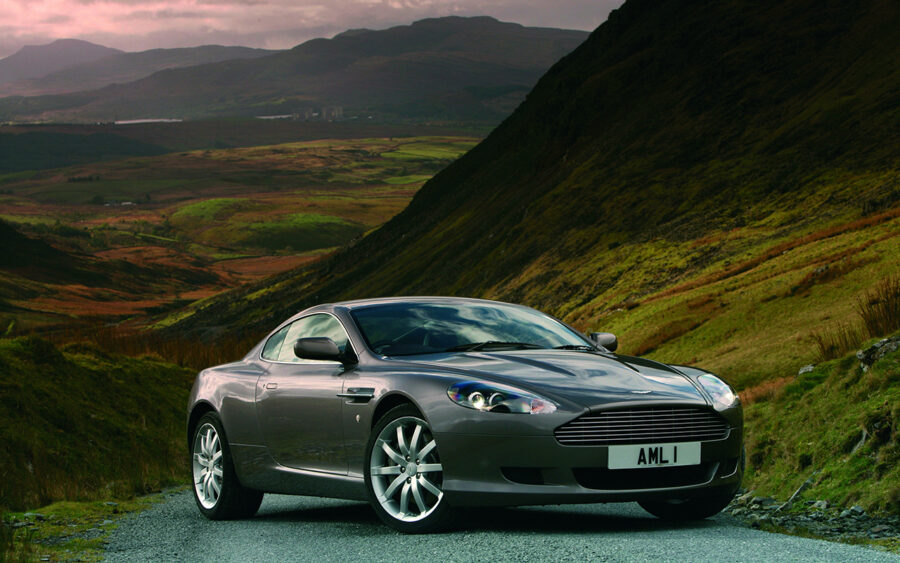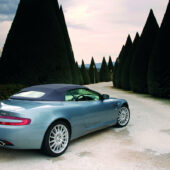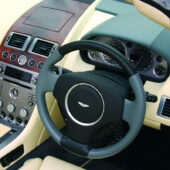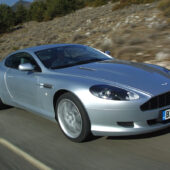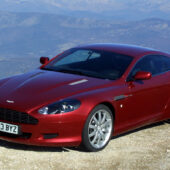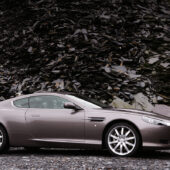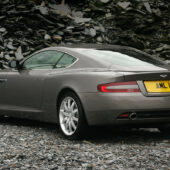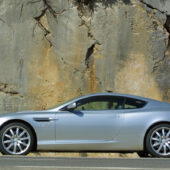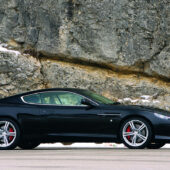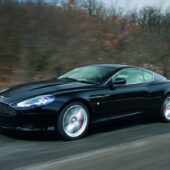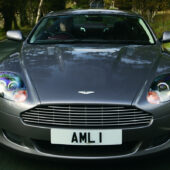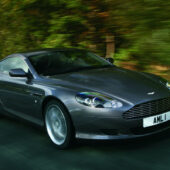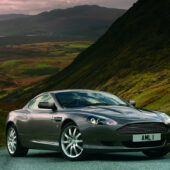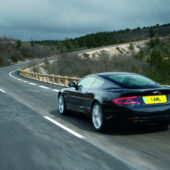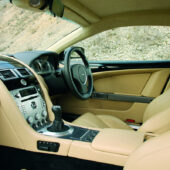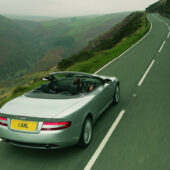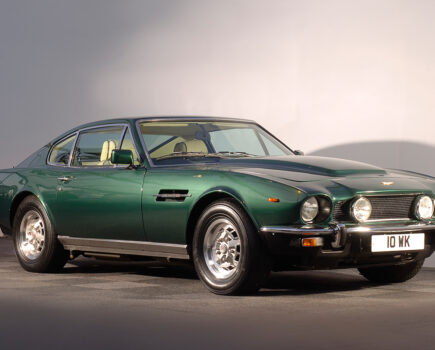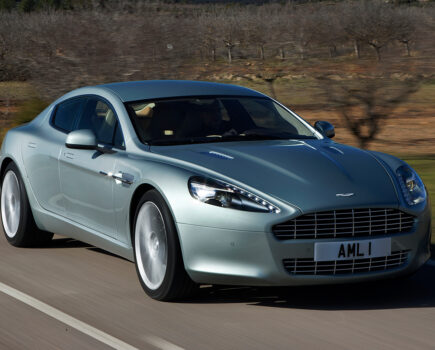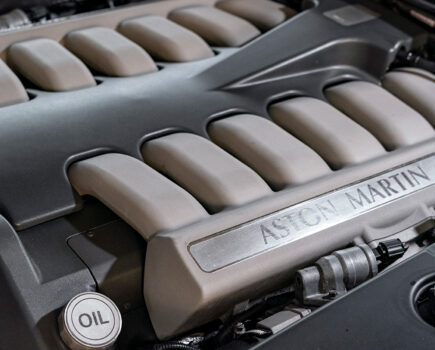The original Aston Martin DB9 is now verging on classic status and is a tempting sports GT for not too much money. Here’s how to buy one
Words: Kyle Fortune
Arguably one of Aston Martin’s most beautiful cars – which given the company’s history is really saying something – it’s incredible to think that the DB9 was introduced way back in 2003. The DB9 was the first car to hail from Aston Martin’s Gaydon plant, with all its predecessors having rolled out of the Newport Pagnell factory, although the last car from Newport Pagnell would lend some of its tech to Aston’s then newcomer.
The flagship Vanquish model introduced bonded aluminium and composite construction techniques to the company and the DB9 used a development of this technique that was co-developed with Lotus. Dubbed Aston Martin’s VH (Vertical/Horizontal) Platform (or architecture), versions of this structure would feature under all of Aston Martin’s production models including the Vantage, Virage, DBS, 2012 Vanquish and Rapide, before the Aston Martin DB11 introduced an all-new platform in 2016.
Such were the advances over the Jaguar XJS-derived underpinnings of the DB7 before it, the company chose to leap a generational badge and name its new GT contender DB9. The decision to do so also usefully prevented any confusion that there might be a V8 under its shapely bonnet. There wasn’t, the DB9 instead featuring a 5.9-litre V12 engine, which, like the platform, owed a lot to the Vanquish flagship model. Naturally, the DB11’s power output was lower than the Vanquish, with Aston Martin quoting peak power of 450PS at 6,000rpm, with maximum torque of 570Nm arriving at 5,000rpm.
The DB9 was initially launched with a six-speed automatic transmission, joined shortly after by a six-speed manual – an option that very few buyers picked. The automatic suited the DB9 and its placing as a sports GT as opposed to an out-and-out sports car, although Aston Martin did offer the DB9 with a Sports Pack, which heightened the driving experience by dropping the ride height by 6mm, significantly increasing the spring rates and changing the anti-roll bars, as well as adding a structural under body panel and dampers to match the other suspension revisions. Available from factory or as a retrofitted package to any existing DB9, the Sports Pack added agility and precision to the DB9 to allow it to compete better with sportier cars in its class. From 2010 Aston Martin updated the DB9, upping power from its engine and also adding adaptive damping to the suspension, along with a number of minor improvements and revisions to the interior and standard and optional equipment.
Among its rivals you could count cars like the Ferrari 575M Maranello, Porsche 911 Turbo and Maserati Gran Turismo, as well as a number of alternatives from BMW and Mercedes-Benz, but its closest rival was the Bentley Continental GT.
Although it’s described by Aston Martin as a 2+2, you’d be hard pushed to get anyone in the rear seats of the DB9. Aston also offered the option to have it built as a 2+0, with a simple storage area behind the front seats. Offered as either a coupe or a Volante convertible, the DB9 cost in excess of £100,000 as a coupe, and you can now pick one up for a quarter of that.
Check out what to look for if you’re in the market, because while they can be inexpensive to purchase, buying the wrong one will end up costing you in the long run. We speak to Aston Martin specialist, John McGurk, from McGurk Performance Cars, who highlights things to look for if you’re in the market.
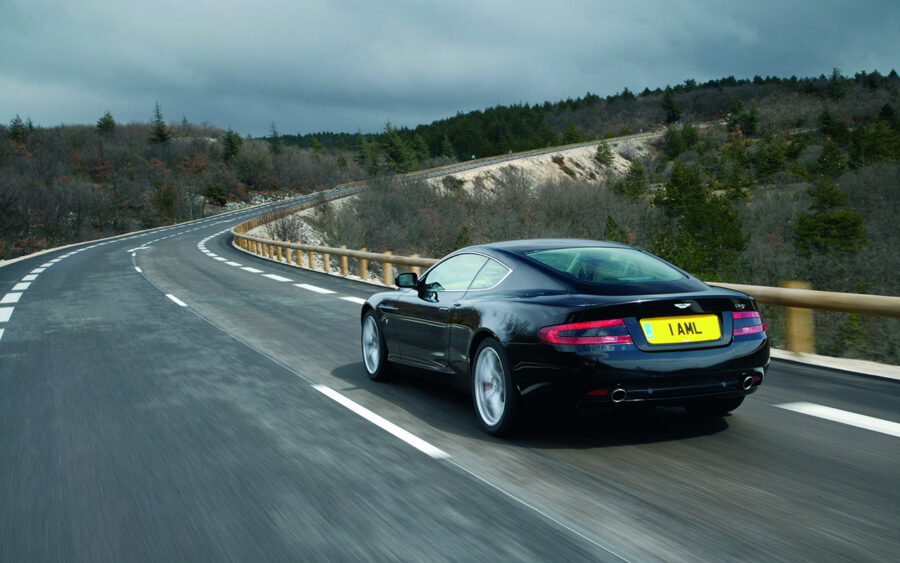
Bodywork
The Aston Martin DB9’s bodywork is a mix of aluminium and composites, which makes it strong and light but also complex and costly to repair. Aluminium is not immune from corrosion; Aston Martin did provide a 10-year anti-corrosion warranty with the DB9, but it was carefully worded to only include corrosion deemed to be outside in, as opposed to water ingress from outside. You don’t need to search too hard to find disgruntled owners complaining about Aston Martin’s customer service in this regard.
It’s fairly well established that the DB9 does suffer corrosion issues manifesting as bubbling in the paintwork, and many will have had remedial work under warranty early in their lives. The most common areas are around the door handles, the trailing edge of the doors, around the wing mirror mounts, wheel arches and more. Composite panels suffer similar problems, with issues apparently arising due to the paint preparation process. Aston Martin has apparently addressed this since, which will benefit owners of newer models, but most DB9s are likely to have paintwork issues of some sort. The DB9 isn’t alone in this, though repainting panels, particularly composite ones, can get expensive if a lot of work is required. As with any prospective purchase, inspect the bodywork fastidiously, and look out that tell-tale bubbling paint.
If you’re buying a Volante, check the folding fabric roof for any wear and tear, because if it needs replacing you’ll be looking at a £10,000 bill as a minimum. Check the boot in both coupes and volantes for water ingress, this getting in via the rear taillight seal. While you’re looking, check all the lights for condensation build up, as they’re all prone to this, while it’s also worth checking the headlight washer jets work.
Engine and transmission
Power comes from a 5.9-litre naturally aspirated V12 engine. Initially delivering 450PS, Aston Martin’s changes for the 2008 model year saw that output rise by 20PS, with Aston again upping the output in 2013 to 510PS. The V12 is mated to either a six-speed automatic transmission supplied by Graziano, or a ZF sourced six-speed manual. The automatic, by far the more common choice, was named Touchtronic, and along with its fully automatic mode capability the DB9 driver could take over by using the large shifter paddles mounted behind the steering wheel. Manual cars are comparatively rare, and more coveted as a result, meaning you’ll likely pay more for one, though, conversely, it’ll also be certain to retain its value better.
It’ll come as no surprise to potential owners that fuel consumption is heavy, with around 14-15mpg in normal use, or less if you’re in a hurry, and perhaps as high as 20mpg if you’re on a long motorway trip. Servicing is crucial, even if the Aston isn’t being used regularly, McGurk recommends an annual service to keep everything in order. There are some known issues with the V12, not least that it consumes a decent amount of oil. Keep an eye on levels, because running it low on oil will cause you no end of problems long term. It’s worth checking the air filters as oil can collect in their housings as a result of the failure of the PCV valve and the pipe that feeds it.
Listen out when cold-starting for a knocking noise, as McGurk explains: “cold start knocking is likely to be big end bearings, the noise going away when it gets hot, but the problem doesn’t.” Similarly, there’s a hot ticking sound associated with the V12, which can be “either little end bearings, or the liners become oval and you get piston slap. It’s hard to differentiate, either way it’s a new engine because strip and re-build is becoming too expensive, you can get a new engine direct from Aston Martin for about £13,500 plus VAT, which is about what you’d pay to re-build it. The ones Aston Martin supply come with a warranty for a year, they’re better value, and they’re bench tested/dyno-ed before delivery”.
Catalytic convertors are about £5,000 if they need replacing, plus fitting. Plugs and coils are fairly common failures, with any misfiring pointing to this. The propshaft can go out of balance; this obvious if there’s a pronounced vibration from underneath, while diffs can be problematic. “What happens is either the crown wheel and pinion fail, or the plates fail, lack of oil changes are to blame,” explains McGurk. “You’ll hear it very slowly on full lock, it’ll grind, you’ll feel it through the car. The crown wheel and pinion will be you’re driving the car, coming down the hill when the diff is dragging rather than pushing, and you’ll hear it.”
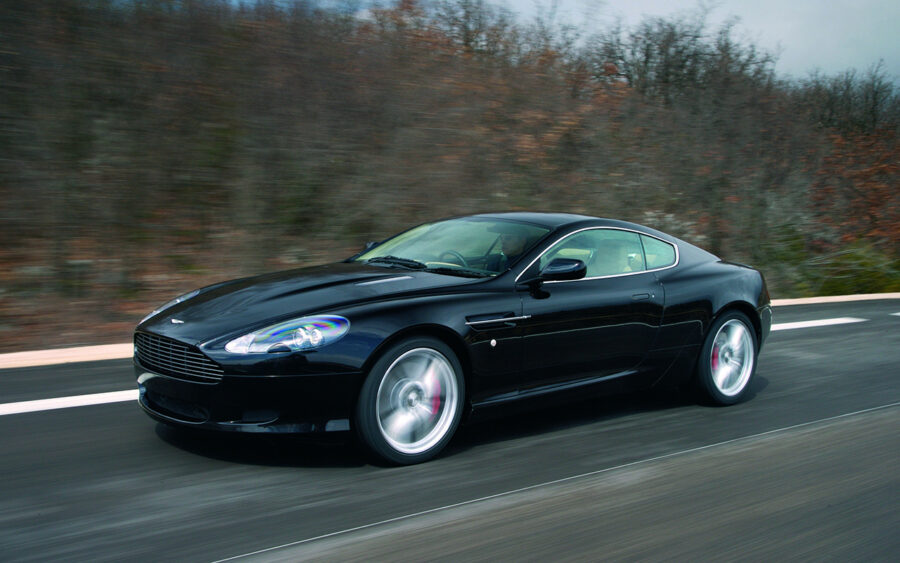
Suspension, steering and brakes
Riding on double-wishbone suspension all round with coil springs, the early DB9 features passive dampers, with later cars gaining a variable damper system. Aston Martin also offered the DB9 with the option of a Sports Pack, which dropped the ride height and added stiffer suspension components accordingly, this either fitted as new or retrospectively, and sharpened up the DB9’s dynamics considerably.
The standard dampers can leak and cost around £800 each. The subframes to which all the suspension is mounted is of an age now where rust can be problematic, so make sure you have a good look underneath and remove any of the underbody panels to make sure they’re not hiding any potential issues.
Brakes shouldn’t cause any real problem; wear should be consistent with use, and service items. The steering doesn’t have any reported issues other than a few recalls in relation to a replacement lower arm and incorrectly torqued bolts. Simply calling Aston Martin with the VIN number will allow you to ascertain whether these have been replaced/remedied as part of the recall.
Tyre wear should be consistent if the alignment’s all good, with uneven wear a sure sign it’s not. Tyres will be expensive but it is false economy to look for budget alternatives, because they’ll detract significantly from the overall driving experience. Budget on around £200–250 a corner for good-quality, recognised-brand, high-performance tyres. Check for any play in the suspension, which will manifest as imprecision on the road. New bushings are relatively inexpensive to fit and will be transformational.
Interior and trim
The DB9’s interior is largely free of faults; nicely finished but with potential for a few squeaks and rattles, as is common with any car of this vintage. Look out for excessive wear on seat bolsters, scratching of the scuff-plates in the doors, and any lose trim. The standard sat-nav from 2006 was a Volvo-derived system and looks ancient now. Check all the carpets for any signs of dampness as this will point to water ingress – never a good thing.
From 2009 the DB9’s conventional key was replaced by the Emotion Control Unit, a glass key that starts the engine by slotting into the centre console. This is prone to damage if dropped, which is why most owners will use the second plastic one instead. There have been issues with the early Linn audio systems, so check it’s all working or opt for a later car which brought a standard, improved Alpine system.
McGurk highlights some issues with door and roof modules, so check everything’s working there. The seat heating system was subject to a recall for all cars from 2006–2014, which if not addressed could result in a fire.
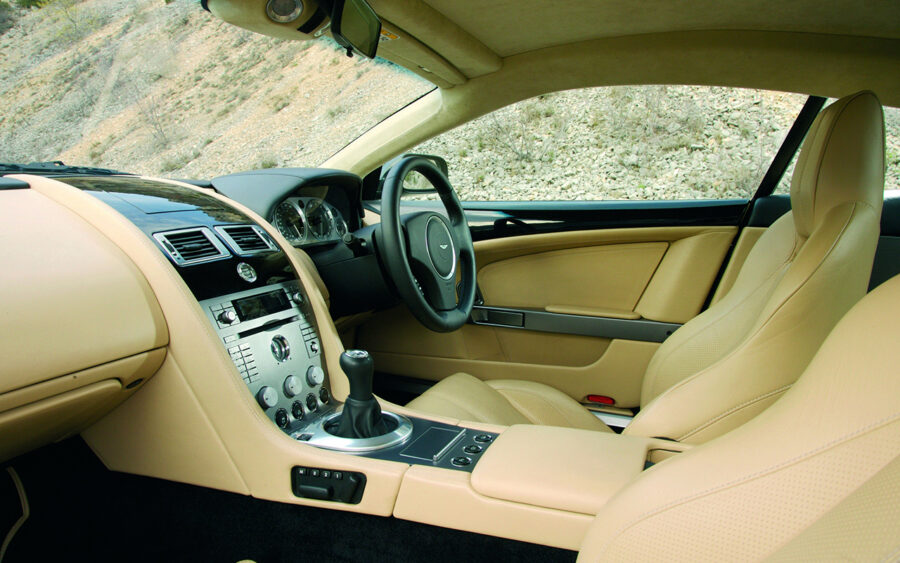
Aston Martin DB9: our verdict
You might have read all the above and reconsidered buying an Aston Martin DB9, but really, they’re no worse or better in relation to ownership costs and any mechanical issues than any car of similar prestige and performance. McGurk admits that they’re getting to an age where they are starting to need light restoration work, but again, that’s true of the DB9’s contemporaries.
Get a good one (there are plenty to pick from) and you’ll have a car that’s not just wonderful to look at, but sounds magnificent and still offers incredible performance.

